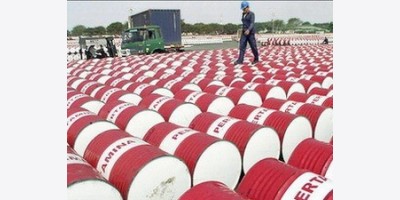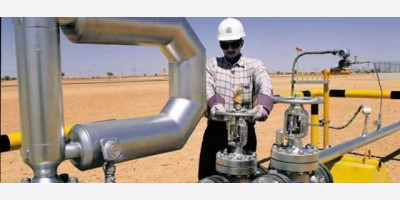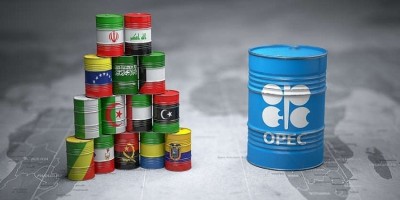LONDON: Benchmark crude oil prices have barely moved for more than two months, implying the market has found a temporary equilibrium after the enormous price shock in the second half of 2014 and early 2015.
Over the last 30 trading days, the range between the highest and lowest closing prices for front-month Brent futures has been just $4.50 per barrel.
The highest close for the front-month futures contract was at $66.54 per barrel (May 21) and the lowest was $62.01 (June 29).
The trading range is the smallest since the shock began in June 2014, and down from a peak of almost $40 per barrel in early January 2015.
In dollars per barrel, the range has been narrow by the standard of the last decade.
Even in percentage terms, which allow for differences in outright prices, the market has been quiet.
The trading range has been around 7 percent over the last 30 days, down from almost 40 percent at the start of 2015.
The price stabilization implies the market believes $60-65 per barrel will gradually bring supply and demand back into balance, which seems sensible.
The low variability in prices is also helping anchor short- and medium-term expectations for producers and consumers at around the current level.
Expectations are not always correct but price convergence within a fairly narrow range makes it easier for producers and consumers to formulate budgets for the rest of 2015 and 2016.
VOLATILITY
Volatility is a subtle concept that has rather different meanings for different people in oil and other commodity markets.
For traders, investors and hedgers, “volatility” has a precise definition as the standard deviation of price moves over a given number of days and expressed at an annualized rate.
For commodity producers and consumers, however, volatility is not about daily price movements but ranges over a period of time.
Markets can be volatile but range-bound if there are many big daily price movements that cancel one another out.
Such “choppy” markets boost the cost of hedging but do not otherwise concern producers and consumers since the fluctuations average out and prices remain steady over time.
Conversely, markets can exhibit big price ranges without much volatility if there are lots of small daily moves all in the same direction.
Producers and consumers care very much about big price shifts, whether or not they are accompanied by volatility in the technical sense.
Large shifts confound old assumptions about costs and revenues and make it hard to form new ones with confidence.
The huge price shifts in the second half of 2014 and the first three months of 2015 made detailed planning almost impossible for oil producers (and, to a lesser extent, consumers). The only safe assumptions about oil and fuel prices were the most conservative ones.
But the recent stabilization of prices at $60-65 per barrel makes it far easier to produce some planning assumptions with appropriate scenarios around that level.
The market has discovered a new short- to medium-term trading range.
Prices below $50 are unsustainably low because they cause too much production to be lost and strong growth in demand.
Prices much above $70 or $75 would be likely to prompt widespread reactivation of shale drilling and possibly curb fuel demand.
Producers and consumers will therefore probably end up employing a baseline forecast of around $60-65 for the rest of 2015 and into 2016, with a low-price scenario of $50 and a high one of $75, which is good enough for most planning purposes.
— John Kemp is a Reuters market analyst. The views expressed are his own.
Source: Reuters























